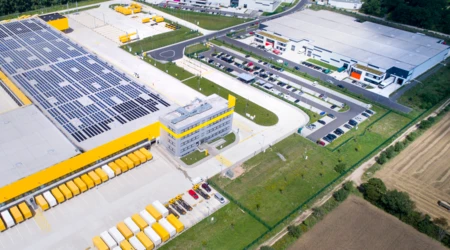Supply chain transformation, project management and implementation
Developing a plan or strategy is one side of the coin. Successful implementing or even transforming your supply chain a different one.
Strategic, tactical and operational studies will often be followed by implementation of the results in your day to day operations and/or a transformation of the current organization and processes. A project or change manager will be leading the change. You are trying to free up resources with the proper background to lead and support the initiative or to be a vital team member in the project. In case you lack certain expertise or simply don’t have the resource(s) available, we can provide experienced resources for your project.
Projects need to be Implemented and change is often required. Seamless implementation is key, but not always achieved resulting in long recovery periods and/or organizational distress. In order to achieve seamless change we uses proven methodologies and seasoned staff. Developing the right supply chain solution is only one element of the equation. Making it happen is another one. Many supply chain transitions fail either due to the lack of a proper vision or due to poor implementation planning/execution. Over the last decade, we have developed a strong implementation support capability including a pool of senior resources and experienced professionals.
Some key questions to be answered and processes to be managed to realize supply chain changes successfully are:
- Sponsorship
How is the initiative anchored in the organization? How do we sell the new concept to our board? Who is the sponsor of the project? - Organization Alignment
How to link the supply chain vision with the overall business strategy? How to implement? What kind of organization, role, team, timelines? Sequence of activities? Which resources do I need? - Risk management
What are the risks and how to set up risk mitigation plans? - Interdependencies
What are the interdependencies between the transformation and other projects such as IT implementations? How to manage timelines, resources, budget and risks? - Result orientation
What are the benefits? How will we measure during the project and the final results (SMART). How to link the new concept and related organization into performance metrics and KPIs? How do we measure results? - Communication
Which stakeholders are involved? How to best manage all internal (and external) stakeholders? Who needs to be informed? Which partners, suppliers customers are effected and how to communicate with these stakeholders. - Steady State
Do we need changes in the current organization after go live? What functions, processes?



Project roles
We offer various levels of support specifically suitable for your project and aimed at delivering a seamless implementation. Our resources are able to take a role in the project that perfectly matches your needs and own capabilities. In our project we provide added value with four distinct typical roles:
- Ownership role, where we are responsible from A to Z
- PMO role, typically filling the gap in your specific project
- SME role, where we provide an expert to cover a capability gap
- Facilitator, owning the process and develop capability in your organization

Structuring the project
When structuring a project we look both at soft and hard factors. There are three areas we will take into account:
- Project Management Approach
- Transformation Management Approach
- Stakeholder management Approach
This integral approach will lead to a successful foundation of the project from both a people focus as well of the structure.

A structured project approach based on phases with clear milestones and gates (go no/go)
We use a proven approach for our change projects. The approach consist of various steps:
- Create a sense of urgency
It is important to emphasize the importance of the change and get buy in from relevant stakeholders in the project.
- Create a coalition
Working together with other stakeholders who are motivated to get the envisioned results. Creating the required power in the organization to make the change is vital.
- Develop vision and Strategy
A clear vision and strategy supports the understanding of the initiative in the organization and all people involved. Also the strategy on how the result will be delivered should be understood in the project organization and the main stakeholders involved.
- Communicate the change
Communication is key. Keeping all relevant stakeholders involved in the project and especially in the results supports a seamless implementation.
- Empower broad based action
Activating a broad team of resources empowered to act in the project and realize the change will result in a smooth process benefitting from a broad driving force.
- Generate short term wins
Generating and communicating short term wins shows individuals in the organization the early success of the change.
- Consolidate gains and deliver more change
- Anchor the new approach
This way you will make sure that the project is carried out to expectation, the right communication levels is applied and the project delivers the required change.



29 November 2022

21 June 2021

01 July 2021

25 April 2022

24 March 2022

17 February 2022

12 January 2022

18 August 2021







